The Moon, Eclipses, and Tides
1/84
There's no tags or description
Looks like no tags are added yet.
Name | Mastery | Learn | Test | Matching | Spaced |
|---|
No study sessions yet.
85 Terms
How does the Moon move across the sky?
east to west
How much of the lunar surface is illuminated by the Sun at all times?
half
How long does the Moon take to comple one “lunar cycle”?
29.5 days - about 1 month
The lunar cycle occurs from _______ to _________.
New Moon to New Moon
In respect to the Earth’s orbital plane, how many degrees is the Moon’s orbit tilted?
5 degrees
How many sides of the Moon are visible from Earth?
only one side
What is a blue moon?
second full moon in a month
does not occur in February
What is a harvest moon?
the nearest full moon to the autumnal equinox
How much of the Moon’s surface has been seen from Earth?
only 1/2
How long does it take the Moon to revolve around the Earth once?
27.3 days
How long does it take the Moon to rotate on its axis?
27.3 days
What type of orbit does the Moon have?
synchronous orbit
Why can we only see the near side of the Moon?
the Moon has a synchronous orbit
How long is a Sidereal Month and what is it?
27.3 days
when the Moon completes it 360 degree revolution around the Earth
Synodic/Lunar Month
29.5 days
completes the Lunar Cycle
How many additional days and degrees of lunar orbit to complete the Synodic Month?
2.2 days due to Earth’s revolution
29.04 degrees of lunar orbit
How many degrees per one day of lunar orbit?
13.19 degrees per day
Where is Earth in the Moon’s orbit?
F1
the point in the Moon’s orbit where it is closest to Earth
Perigee
the point in the Moon’s orbit where it is the farthest from Earth
Apogee
How far away is the Moon from the Earth at Perigee?
356,410 km
How far away is the Moon from the Earth at Apogee?
406,700 km
orbital velocity and the gravitational pull increase at…
Perigee
orbital velocity and the gravitational pull decrease at…
Apogee
apparent angular diameter increases as viewed from Earth at…
Perigee
apparent angular diameter decreases as viewed from Earth at…
Apogee
What is Earthshine?
sunlight reflected off the Earth’s surface back onto the Moon **not direct light
Earthshine only occurs during the…
crescent phases
What mainly causes the Moon’s phases?
revolution of the Moon around Earth
What also causes the Moon’s phases?
Earth’s changing view of the illuminated ½ of the Moon
_____ of the Moon is always illuminated by the Sun but Earth can only see _____ of that half.
½ , parts
What is the exception to the rule that one half of the Moon is always illuminated by the Sun but Earth can only see parts of that half?
Lunar Eclipse
Waxing Phase
after the New Moon
illuminated portion is increasing
light is on the right!!!
Waning Phase
before the New Moon, after Full Moon
the illuminated portion is decreasing
light is to the left!!!
New Moon
0%
Moonrise - 6 am
Moonset - 6 pm
Transit (highest alt) - 12 pm
possible SOLAR eclipse
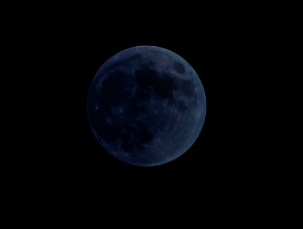
Waxing Crescent
25%
Moonrise - 9 am
Moonset - 9 pm
Transit (highest alt) - 3 pm

1st Quarter
50%
Moonrise - 12 pm
Moonset - 12 am
Transit (highest alt) - 6 pm
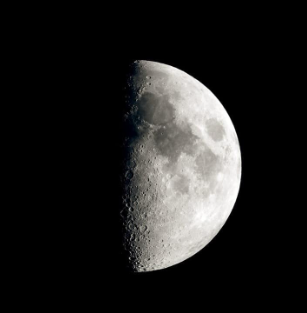
Waxing Gibbous
75%
Moonrise - 3 pm
Moonset - 3 am
Transit (highest alt) - 9 pm
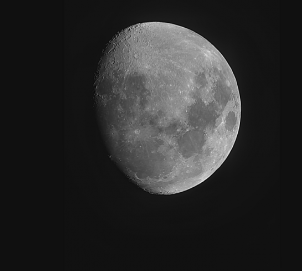
Full Moon
100%
Moonrise - 6 pm
Moonset - 6 am
Transit - 12 am
possible LUNAR eclipse
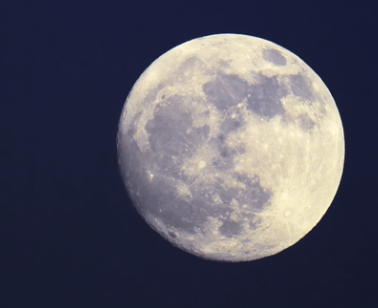
Waning Gibbous
75%
Moonrise - 9 pm
Moonset - 9 am
Transit - 3 am
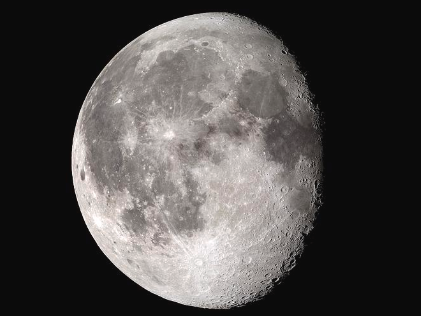
3rd Quarter
50%
Moonrise - 12 am
Moonset - 12 pm
Transit - 6 am
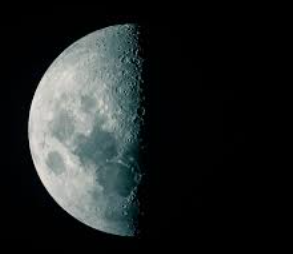
Waning Crescent
25%
Moonrise - 3 am
Moonset - 3 pm
Transit - 9 am
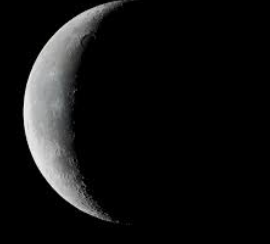
When do eclipses happen?
when one celestial object blocks (node) another
Moon, Sun, Earth
Two types of eclipses:
lunar eclipse (common)
solar eclipse (rare)
Eclipses can only occur during which phases?
New and Full Moons
2 types of shadows:
Umbra
Penumbra
Umbral Shadow
darkest + innermost part of the shadow
Penumbral Shadow
lighter and outside part of the shadow
What occurs during a total lunar eclipse?
Moon orbits through Earth’s umbral shadow
normally Moon would appear full
A lunar eclipse occurs during a _________.
Full Moon
3 types of Lunar Eclipses:
Penumbral
Total
Partial
What do the different types of Lunar Eclipses depend on?
the exact alignment of the Sun, Earth, and Moon
Penumbral Eclipse
Moon passes through the Penumbra only
Total Eclipse
Moon totally incased in the Umbra
RED
Partial Eclipse
Moon passes through both Umbra + Penumbra
The Moon’s color depends on…
Earth’s atmospheric refraction + clarity
Lunar Eclipses occur how many times a year and for how long?
twice a year
for about an hour or two
Lunar Eclipses can be seen by…
anybody experiencing night during the lunar eclipse (50% of the Earth)
What is a “Supermoon”?
full moon at perigee
What happens during a solar eclipse?
Moon orbits around Earth casting its shadow on from Earth - it appears that part or all of the Sun is blocked out
A solar eclipse occurs during a _______.
New Moon
During a total solar eclipse, the Earth moves through…
the Umbra only
What is visible during a total solar eclipse during totality?
corona (thin, outer gases of the Sun)
Annular Solar Eclipse
Earth moves through the Penumbra, but the Umbra’s shadow does not reach the Earth
When is a solar eclipse Annular?
when the Moon is farthest from the Earth (apogee) and the Sun is close (perihelion)
What percentage of Earth can see a Total Solar Eclipse?
1%
If you are in the _________ shadow, you can only see a partial eclipse.
Penumbra’s
NOTE
During a partial eclipse, people a few miles away can see a total eclipse.
Why do we have tides?
gravity
If mass increases, then…
gravity increases
If distance increases, then…
gravity decreases
The gravity of the Moon + Sun pull on…
the Earth’s oceans
What exhibits the most “tidal force”?
the Moon
What percentage of the Moon + Sun exhibit tidal force?
Moon: 55%
Sun: 45%
Why does the Moon exhibit more tidal strength than the Sun?
closer proximity of objects (distance) exhibits a stronger gravitational force than mass does!! *Moon is closer to Earth than the Sun
How many low tides and high tides occur every 24 hours?
2 low tides
2 high tides
How often do tides change?
every 6 hours
A “tidal change” is…
12 hours
What phases do normal tides occur in?
Gibbous + Crescents
What phases do spring tides occur in?
New + Full
What phases do neap tides occur in?
1st + 3rd Quarter
Normal Tides
crescent + gibbous
Average - avg. high tides and avg. low tides
Spring Tides (New Moon)
extreme tides: high tides are very high, low tides are very low
back side bulge a result of Centrifugal force
gravitational pull of Moon + Sun are combined
greatest tidal ranges
Spring Tides (Full Moon)
extreme tides: high tides are very high, low tides are very low
gravitational pull of Moon + Sun are combined
greatest tidal ranges
Neap Tides
1st + 3rd Quarter Moons
Moderate Tides - lower high tides and higher low tides
Sun + Moon work against each other at right angles, canceling bulge
small difference between tides